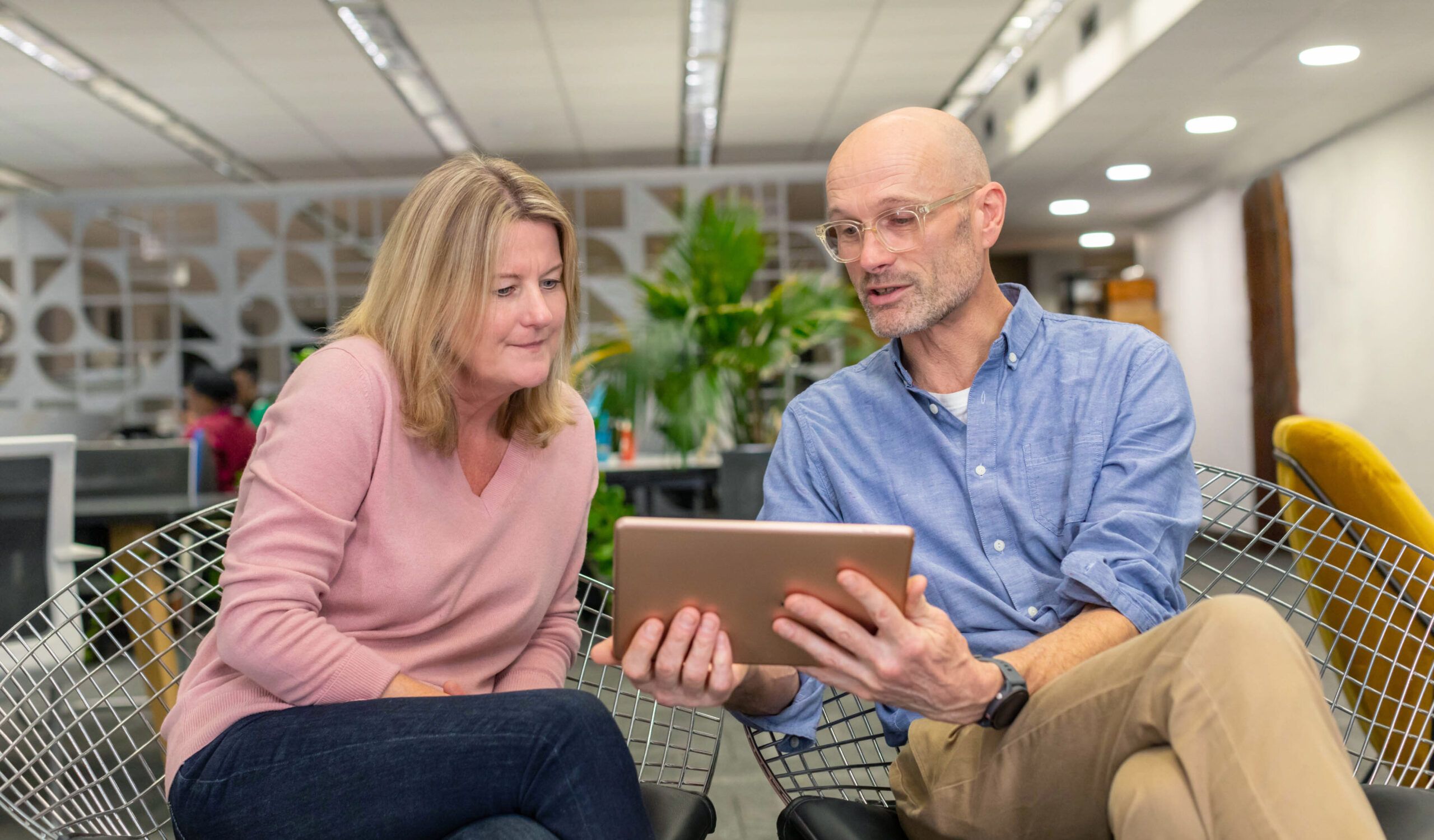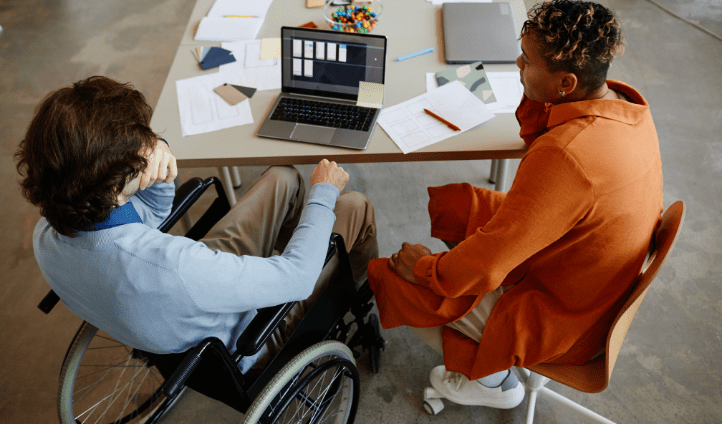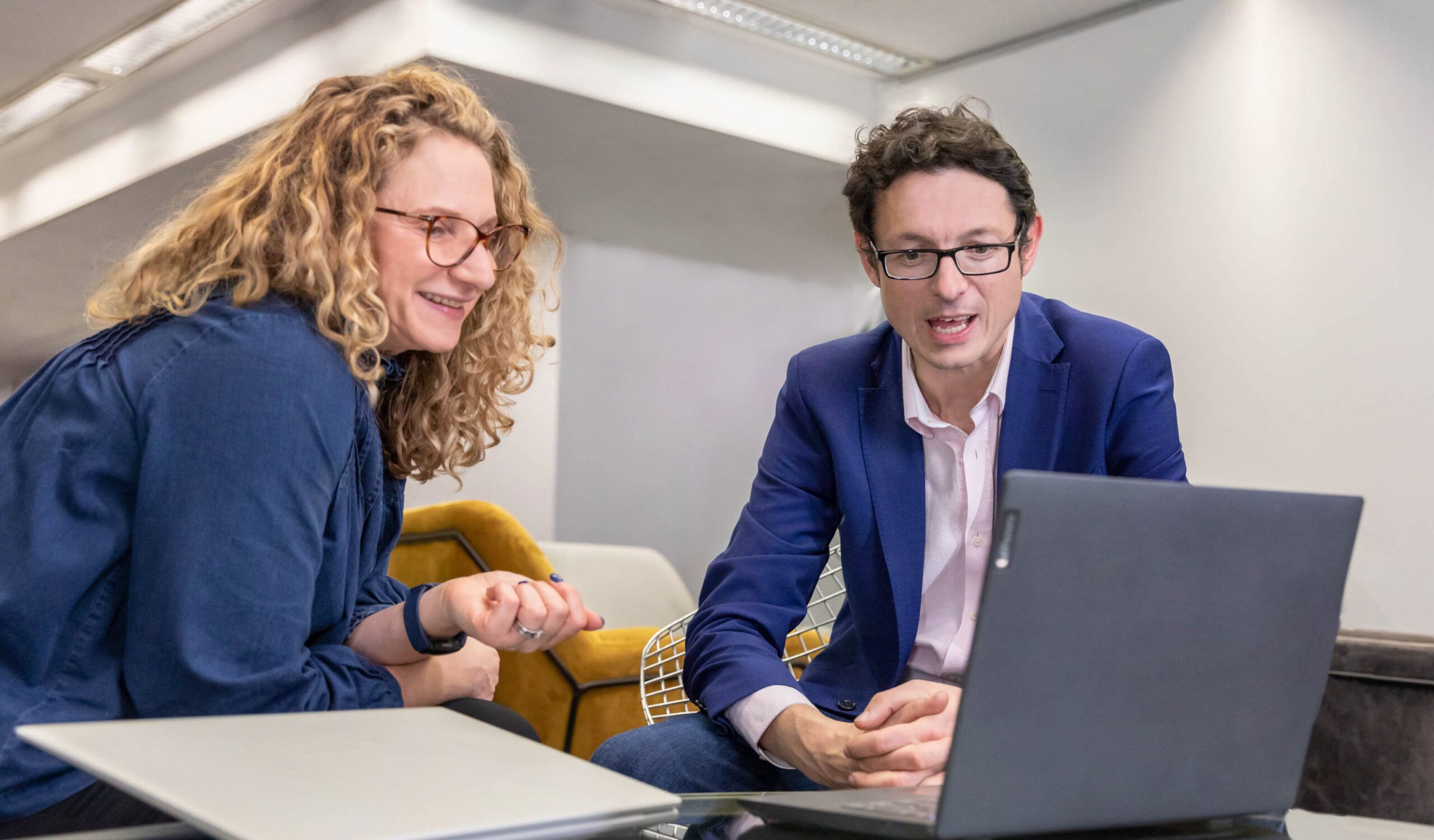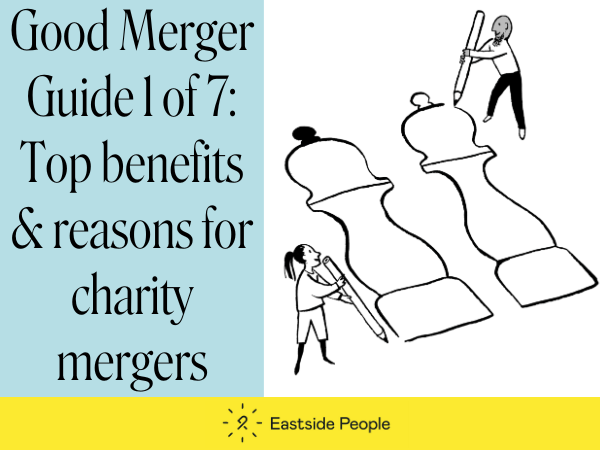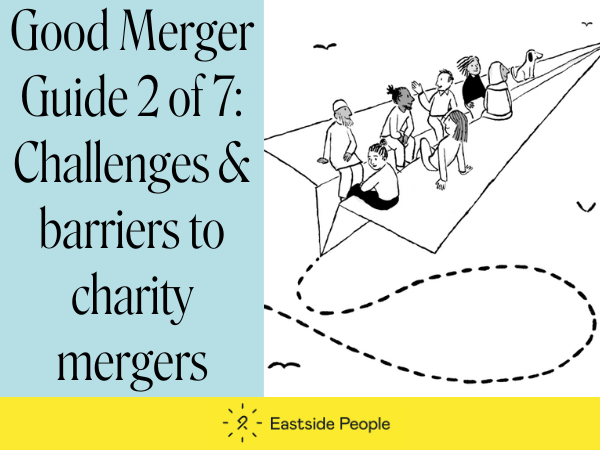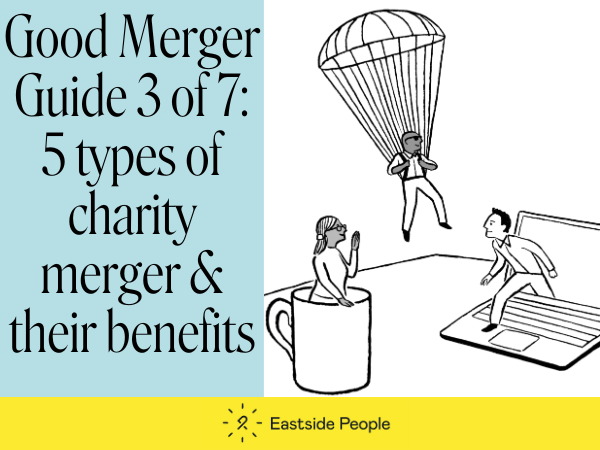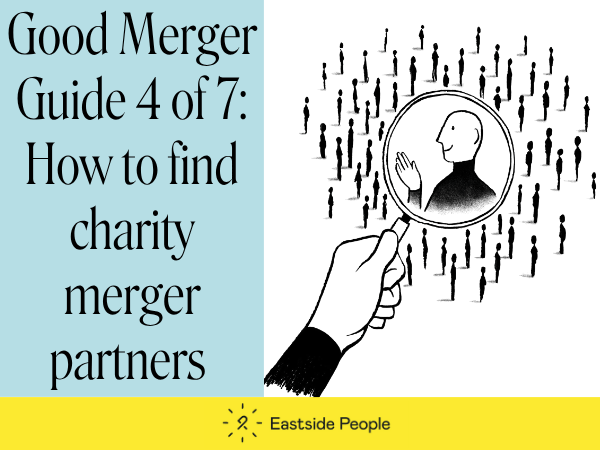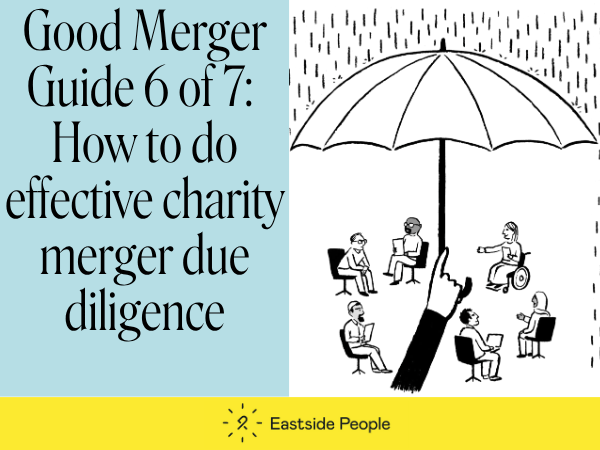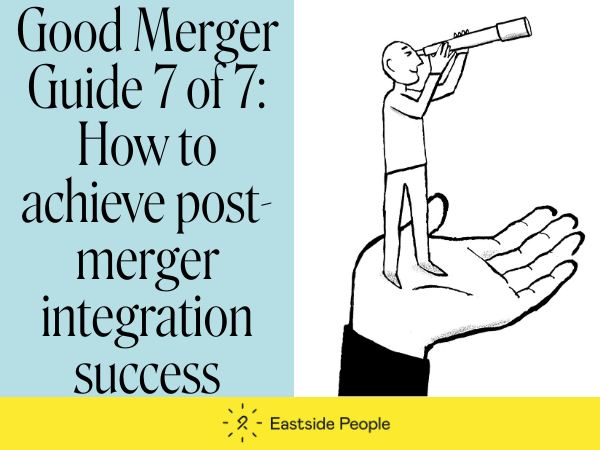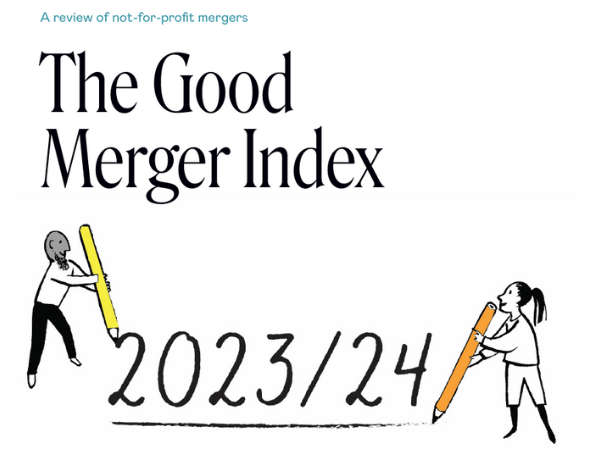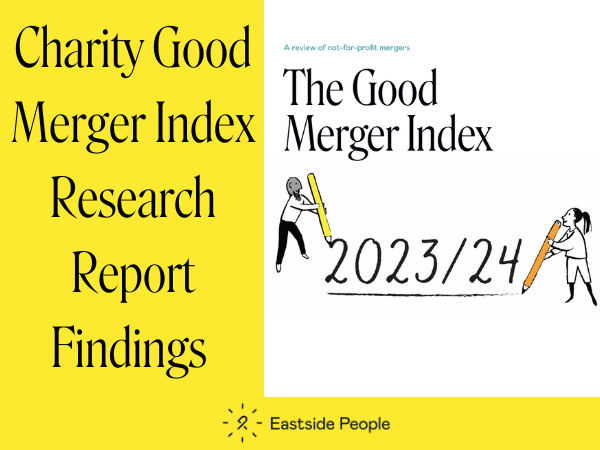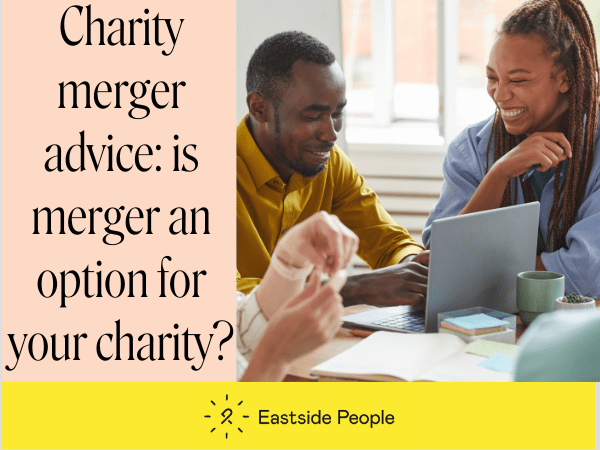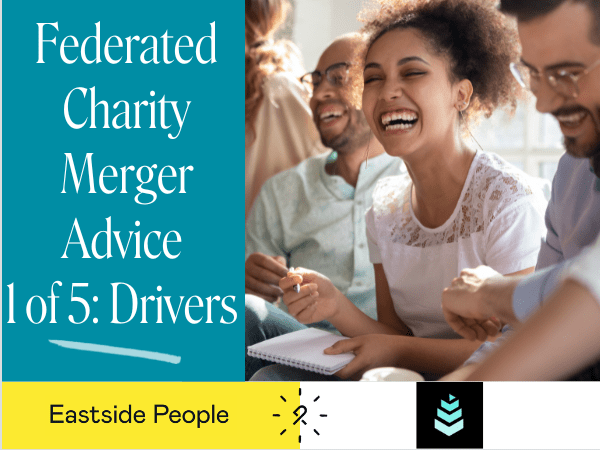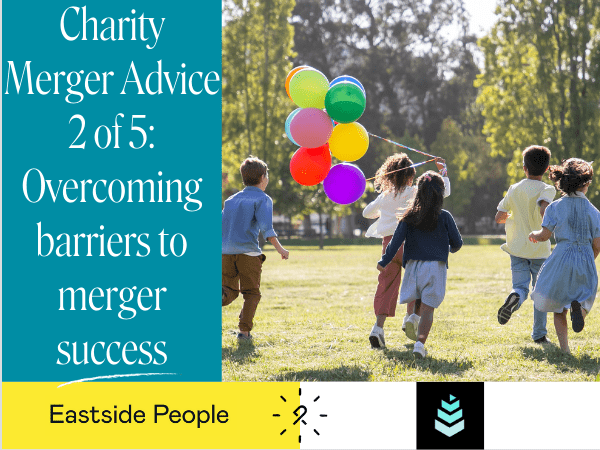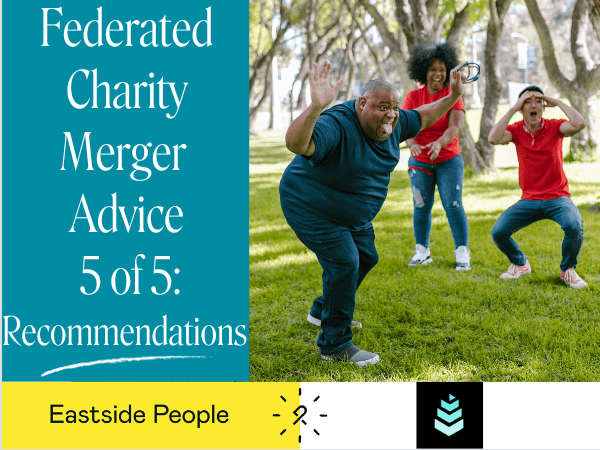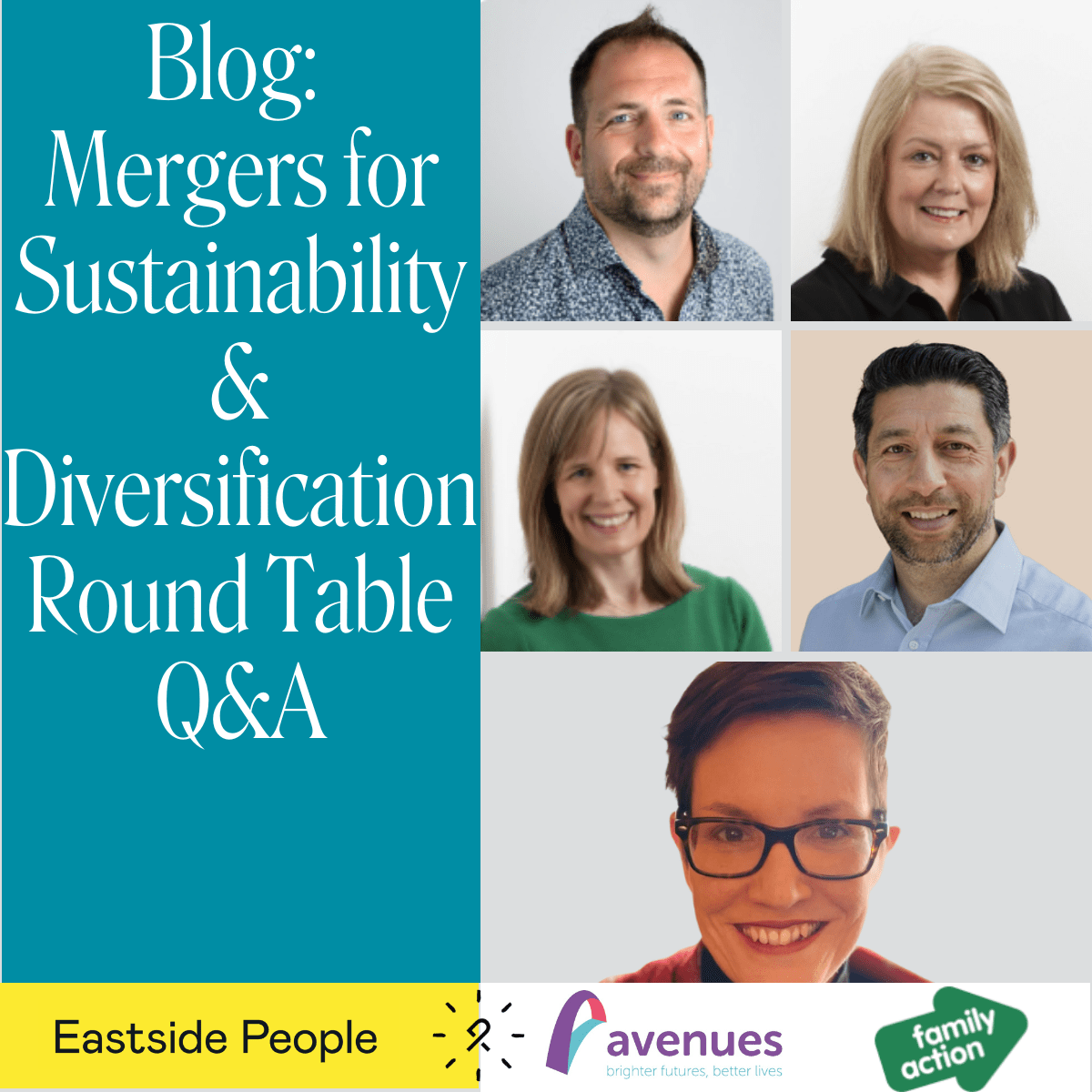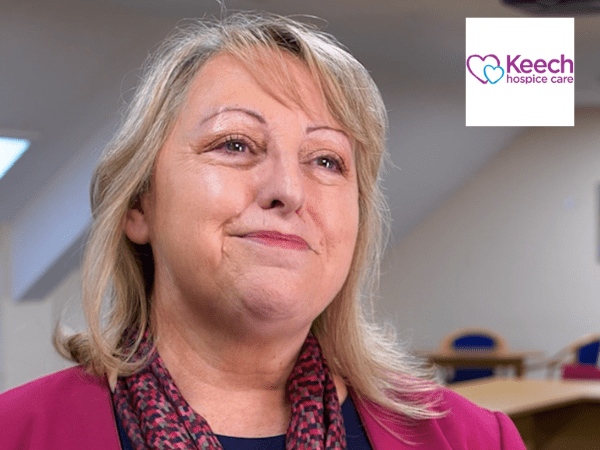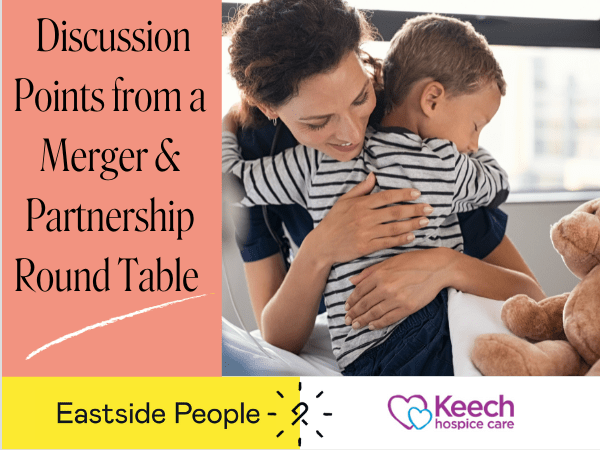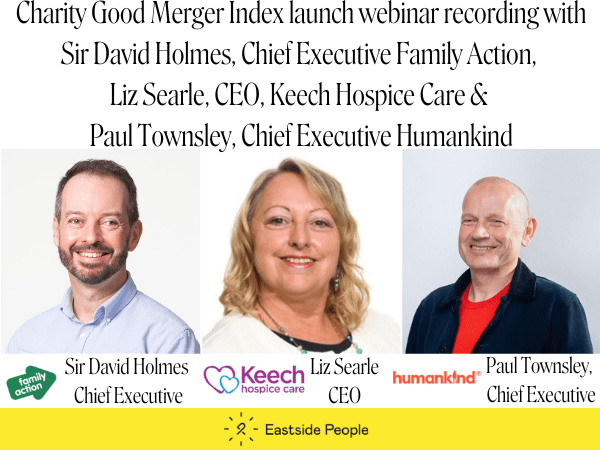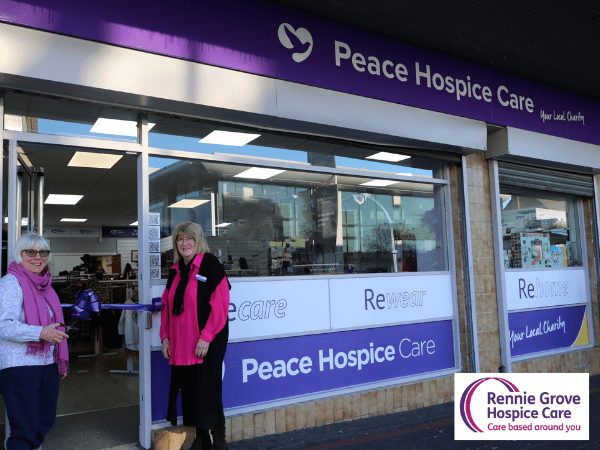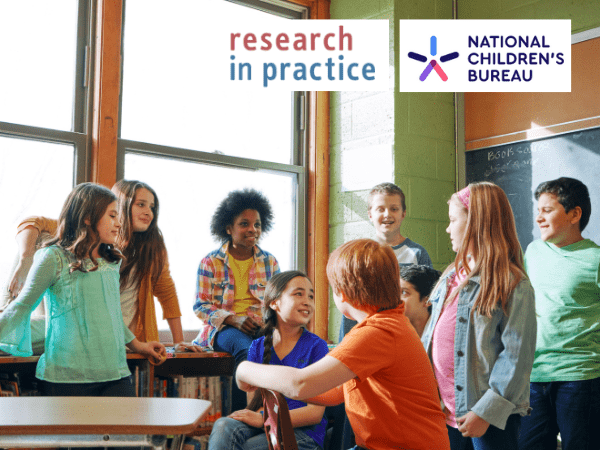Successful mergers can have a transformative effect changing the scale, reach and prospects of an organisation and creating a better deal for the people that rely on a charity’s services. At Eastside People, we have been supporting charities [and other not-for-profit organisations] through partnerships and mergers for [over] two decades. In that time, we have witnessed organisations embark on partnerships and mergers for a myriad of reasons.
The Good Merger Guide was created by Eastside People to:
- Highlight the main questions to consider before embarking on a merger
- Provide step by step advice on the three stages of managing a merger.
We have taken some of the best advice and guidance from the Good Merger Guide focusing particularly on the practical and technical aspects of mergers. The 7 articles that make up the set are a must read for anyone in a charitable organisation considering merger as a possible option and wanting to know more about what is involved. This is article 5 of 7.
Merger feasibility study: Steps to take to decide if a charity merger is viable
Deciding to merge is perhaps the single biggest decision that any charity can make. So once both organisations have agreed, in principle, to the merger, it is advisable for you to each conduct a feasibility study before going any further.
Working through the 15 topics listed below will provide your organisation with a valuable opportunity to take a strategic step back at a critical moment in the process.
In each case, we recommend that you ask the following four questions:
- Key Benefits: what are the main advantages for your organisation?
- Key Challenges: what are the potential obstacles?
- Risks: what are the potential risks for your organisation?
- Red Lines: what are your non-negotiables?
This process will allow you to assess the viability of the merger, not just from a practical perspective, but also in the context of your organisation’s long-term goals and vision. (See [article 1] for more information on the potential benefits of merger, and [article 4] for more information on how to take a strategic approach to identifying potential merger partners.)
The 15 feasibility study topics are:
-
Strategic Fit:
- Comparison of Strategic Objectives: Ensure alignment of strategic goals.
- Values and Culture: Compare organisational values and cultures.
-
Financial Analysis:
- Financial Health: Review financial statements, including sustainability, income/expenditure, reserves, assets, liabilities, and investment needs.
-
Legal and Regulatory Considerations:
- Governance Arrangements and Options: Understand legal implications and governance changes
- Regulatory Approvals: Ensure compliance with relevant laws.
-
Cultural Compatibility:
- Organisational Culture: Assess compatibility to ensure smooth integration
- Staff and Volunteer Impact: Plan for effective communication and engagement.
-
Marketing and Branding:
- Discuss and agree on the branding and raise any issues as early as possible, as these can often be a ‘red line’ for some Chairs and Trustees.
-
Operational Assessment:
- Services Alignment: Evaluate how services align across organisations
- Customer-Facing Access Channels: Compare and assess compatibility
- Operational Considerations: Consider geographic spread, office space, admin, future systems, processes, and remote working.
-
Risk Assessment:
- Risk Identification and Mitigation: Identify potential risks and develop mitigation strategies.
-
Stakeholder Engagement:
- Stakeholder Analysis: Identify key stakeholders and assess how the merger will affect them, and your relationship with them.
-
Impact on Beneficiaries:
- Beneficiary Needs: Ensure the merger meets beneficiary needs effectively
- Feedback Mechanisms: Establish mechanisms to gather and respond to feedback.
-
Implementation Planning:
- Integration Plan: Develop a detailed plan for integrating the organisations
- Monitoring and Evaluation: Set up systems to monitor progress and evaluate success.
-
Management Structures and Personnel Issues:
- TUPE Considerations: Identify how Transfer of Undertakings (Protection of Employment) regulations might apply to the merger
- Impact on Key Personnel: Consider the effects on management and staff.
-
External Reputation and Perception:
- Reputation and Contractual Obligations: Assess the ability to deliver on existing contracts and manage external perceptions.
-
Opportunity Costs:
- Merging vs. Not Merging: Evaluate the opportunity costs associated with merging or not merging.
-
Capacity, Skills, and Experience:
- Engagement in the Process: Ensure both organisations have the capacity, skills, and experience to fully engage in the merger process.
-
Proposed Merger Models:
Due diligence and legal processes will follow, but allowing your trustees to interrogate the prospective merger in this level of detail at this stage will enable you to make a well-informed decision to formally agree (or not) to pursue a merger.
Next Steps:
We are here to help you wherever you are in the merger journey. Contact us for a free, completely confidential 30-minute advice session with one of our merger experts to discuss how to take the next steps.
Find out more about our charity and not-for-profit merger and partnership consultancy services.
While the Good Merger Guide is available for download, as this was originally created in 2014, it contains older case studies and references. Please refer to the latest Good Merger Index and our website merger topics section for our latest case studies, blogs, insights and other merger-related content.
Read the other articles in our ‘how-to’ charity merger series.




